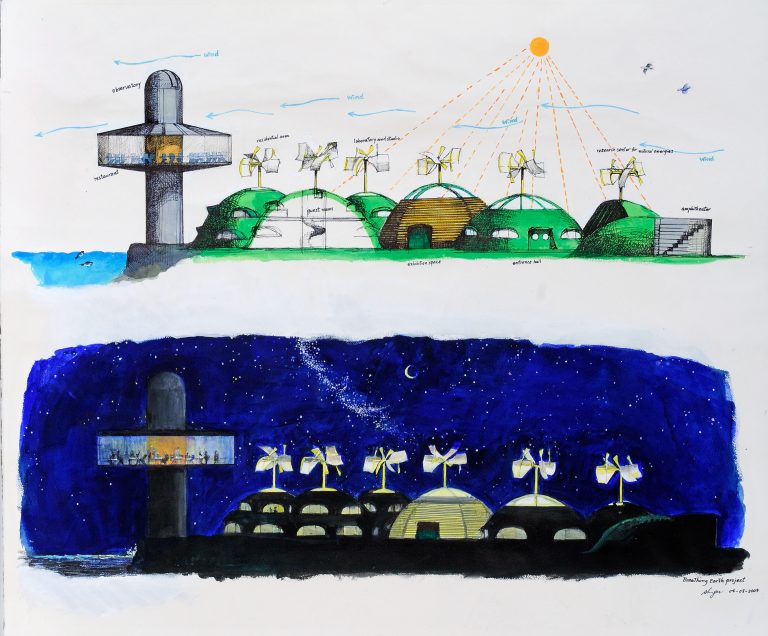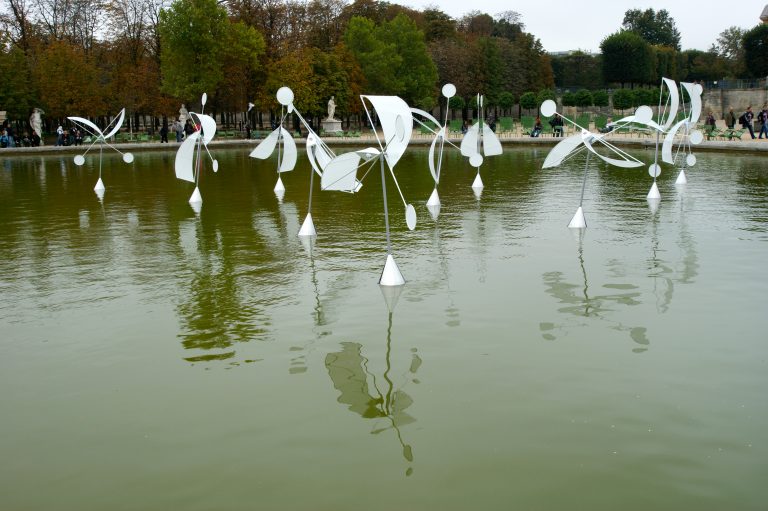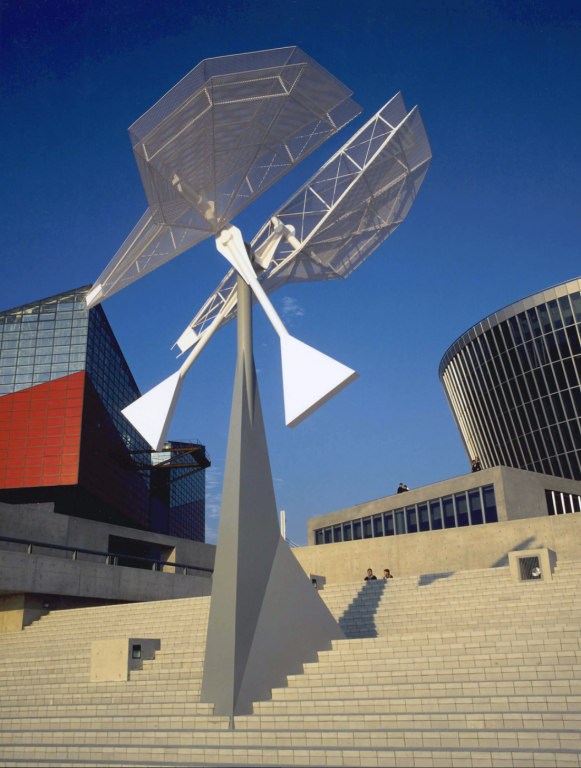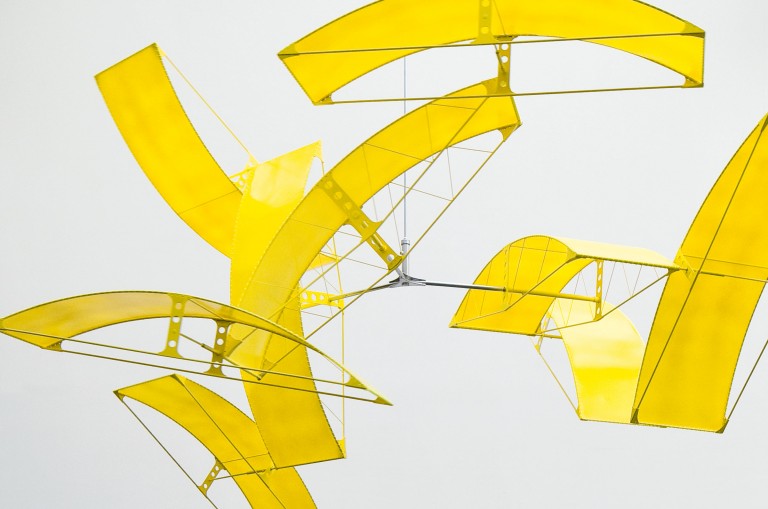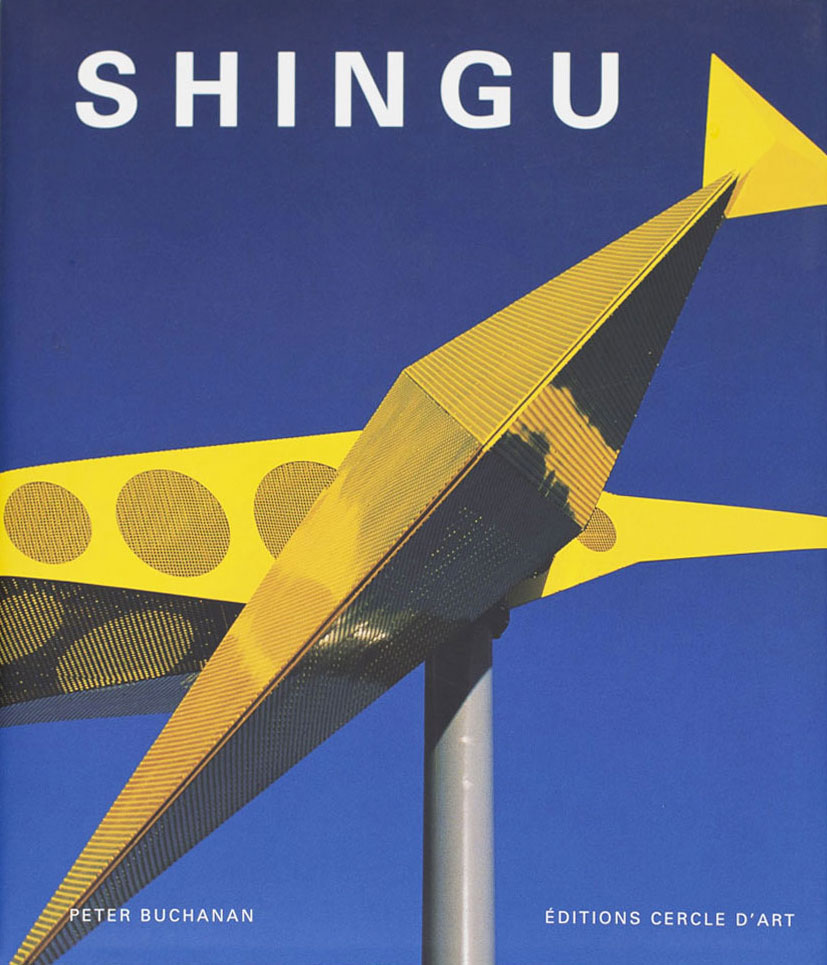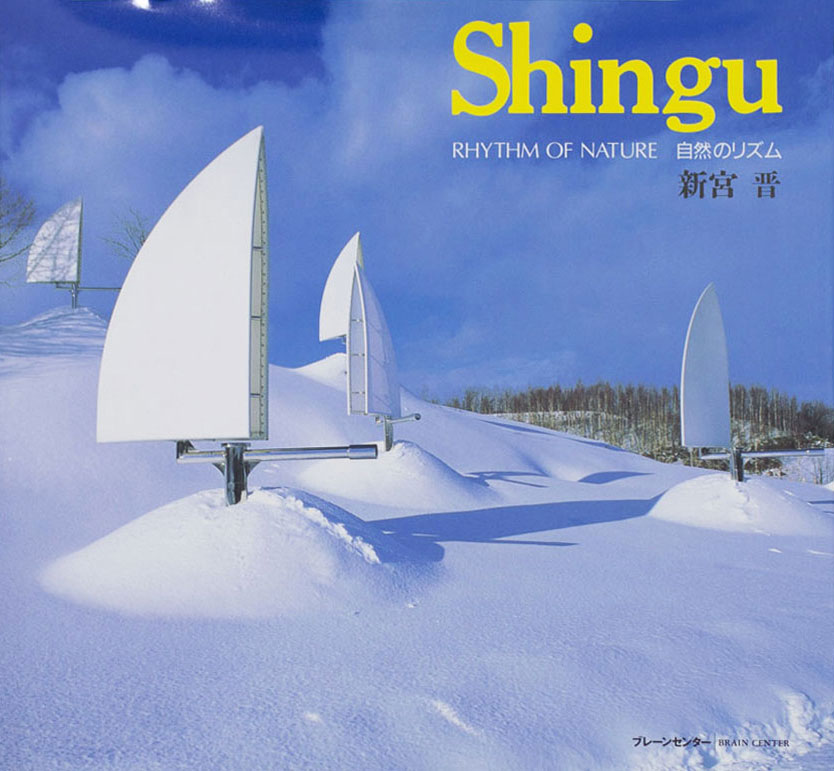Wind Museum, Arimafuji Park, Sanda, Japan
Photograph by Thomas Riedelsheimer
Domaine National de Chambord, France
Photograph by Georges Poncet
Choreography by Jirí Kylián, Garnier Opera, Paris, 2006
Photograph by Franco Mammana
All rights reserved
Mudam, Luxembourg
Photograph by Georges Poncet
Mudam, Luxembourg
Photograph by Georges Poncet
Photograph by Yoshiyuki Ikuhara
12 monumental sculptures by the artist
Arimafuji Park, Sanda, Hyogo Prefecture, Japan
All rights reserved
565 Broome St—designed by Renzo Piano— Soho, New York City
All rights reserved
Sanda, Japan
All rights reserved
Sanda, Japan
All rights reserved
Aono Dam Park, Sanda, Japan
©️ Yoshiyuki Ikuhara
Arimafuji Park, Sanda, Hyogo Prefecture, Japan
All rights reserved
Sanda, Hyogo, Japan
All rights reserved
Sanda, Hyogo, Japan
All rights reserved
Sanda, Hyogo, Japan
All rights reserved
Acrylic and ink on paper
37,4 x 44,9 in
All rights reserved, Courtesy Jeanne Bucher Jaeger, Paris-Lisbon
All rights reserved, Courtesy General Incorporated Foundation ATELIER EARTH
Domaine National de Chambord, France
Photography by Georges Poncet, Courtesy Jeanne Bucher Jaeger, Paris-Lisbon
Octogonal basin of the Tuileries Garden, FIAC Hors les murs, Paris
Photograph by Hervé Abbadie
Photograph by Thomas Riedelsheimer
All rights reserved
All rights reserved
All rights reserved
Group of 21 sculptures
Steel, carbon fiber, polyester cloth
ø 236,2 × H 207 in / ø 299,2 × H 232,3 in
Photograph by Georges Poncet
Mudam Luxembourg — Musée d'Art Moderne Grand-Duc Jean
Mudam, Luxembourg
Photograph by Georges Poncet
Mudam, Luxembourg
Photograph by Georges Poncet
Mudam, Luxembourg
Photograph by Yoshiyuki Ikuhara
Mudam, Luxembourg
Photograph by Georges Poncet
Mudam, Luxembourg
Photograph by Georges Poncet
Mudam, Luxembourg
Photograph by Georges Poncet
Nagasaki Museum of Art, Japan
All rights reserved
Domaine National de Chambord, France
Photograph by Georges Poncet
Domaine National de Chambord, France
Photograph by Georges Poncet
Domaine National de Chambord, France
Photograph by Georges Poncet
Jeanne Bucher Jaeger Gallery, Paris, Marais
Photograph by Georges Poncet
Jeanne Bucher Jaeger Gallery, Paris, Marais
Photograph by Hervé Abbadie
Paris Gallery Weekend 2018
COSMOS Exhibition, Galerie Jeanne Bucher Jaeger, Paris, Marais
All rights reserved
Jeanne Bucher Jaeger — Marais Space
Photograph by Georges Poncet
Opéra de la Stavros Niarchos Foundation designed by Renzo Piano, Athens, Greece
All rights reserved
Tenpozan, Osaka, Japan
All rights reserved
Susumu Shingu graduated from Tokyo University of the Arts in 1960 and studied painting at the Academy of Fine Arts in Rome between 1960 and 1962. He is a painter, sculptor, researcher and philosopher of nature, who gradually turned to sculpture and movement. Today he is considered one of the most important artists of the Japanese contemporary scene and his monumental sculptures, animated by natural elements such as water and wind, have been installed all over the world during the last 40 years.
The Caravan of the Wind, created in 2000, took 21 sculptures to 6 places on the planet, chosen by the artist for their extreme climates, their emblematic winds, and their populations, living as close as possible to the natural elements, whose daily life he shared during the different stages of this Caravan: the rice fields of Sanda in Japan (June 2000), the uninhabited island of Motukorea in New Zealand (Nov. 2000), the icy lake of Inari in Finland (Feb. 2001), the rocky desert of Tamdaght in Morocco (April 2001), the green steppe of Undur Dov in Mongolia (June 2001) and the dunes of Cumbuco in Brazil (Nov. 2001).
Inaugurated on 21 June 2014 in Sanda, near Osaka in Japan, by the Governor of Hyogo Prefecture and many personalities including the architect Tadao Ando, his Wind Museum is an open-air museum in the heart of a vast natural space, where twelve sculptures come to life with the slightest breath, at the whim of the water and the wind, revealing the immaterial presence of air, this “atmospheric” material sculpted by the artist, underlining his sensitive relationship to the world and an acute ecological awareness. Susumu Shingu’s art is also expressed through his theatrical works, initiated in the 1990s and presented in this Wind Museum, according to the seasons. He writes the dialogues, designs the staging and costumes; the artist has also created some fifteen books and pop-ups for children, giving them the opportunity to see, feel and touch the beauty, grace and strength of nature.
A sculptor of wind, water and gravity, Susumu Shingu borrows from the high technologies and talents of his time to create works in harmony with the secret rhythms of the planet. His work is thus nourished by frequent collaborations with renowned designers such as Issey Miyake, Jiři Kylián, Tadao Ando, Renzo Piano with whom a real creative complicity has been born over time; in 2016, three sculptures by the artist were installed at the Cultural Centre of the Stavros Niarchos Foundation in Athens, designed by Renzo Piano. In October 2021, the architect inaugurated one of his latest projects in the Soho district of New York, with a new sculpture by Susumu Shingu, Rainbow Leaves, overlooking the Manhattan skyline…
A first exhibition Sculptures of Respir was devoted to him at the gallery in 2006, followed by Planet of Wind and Water in 2009, and Beyond Time in 2012. The same year, during the Hors les murs FIAC, the gallery presented the installation Sinfonettia of Light in the large octagonal basin of the Tuileries Gardens. The artist’s last solo exhibition at the gallery in 2018, Cosmos, was conceived as an echo of his exhibition Spaceship, at the same time at Mudam Luxembourg – Musée d’Art Moderne Grand-Duc. The Museum honoured the world-renowned artist through an exhibition never before seen in Europe, presenting some fifteen works including La Caravane du vent.
On the occasion of the 500th anniversary of Leonardo da Vinci’s death in 2019, the Domaine National de Chambord, on the initiative of the gallery, devoted a major solo exhibition to the artist, Susumu Shingu, a utopia of today. The ecological dimension inherent in his work found a perfect echo in a domain so fully dedicated to nature; Susumu Shingu’s major work was also presented: Atelier Earth, the creation of a utopian village living from the natural energies of wind, water and sun. An artistic and cultural centre, this village, partly dedicated to children, would allow them to discover art through their five senses. In 2024, this dream project, which the artist has been supporting for years, should be inaugurated in Arimafuji Park, which already houses the Susumu Shingu WIND MUSEUM.
From July 13 to September 14, 2023, Susumu Shingu and Renzo Piano were invited to present an exhibition together at the Nakanoshima Museum of Art in Osaka; this exhibition, entitled Parallel Lives, celebrated the collaboration and friendship of the two creators, both born in the same year.
Susumu Shingu on 13 July 1937, Renzo Piano on 14 September 1937.
From May 19 to November 1, 2023, the Villa Datris Foundation presents a work by Susumu Shingu in the group exhibition Movement and Light at L’Isle-sur-la-Sorgue.
I would like to create a place where we can think about the future of the Earth, with links to artists and educational institutions around the world.
Susumu Shingu.
Ink and acrylic on paper
17,9 × 15,1 in
Photograph by Georges Poncet
Edition of 5
Stainless steel, aluminium and polyester
67,7 × 51,9 in
Photograph by Hervé Abbadie
Ink on paper
9,5 × 10,7 in
Photograph by Jean-Louis Losi
Stainless steel, aluminium and polyester cloth
98,4 × Ø 78,7 in
Photograph by Hervé Abbadie
Ink and acrylic on paper
15,2 × 17,9 in
Photograph by Georges Poncet
Carbon fiber, aluminium, stainless steel and polyester cloth
73,2 × 53,5 in
Acrylic paint on paper
36,2 × 36,2 in
Photograph by Jean-Louis Losi
Stainless steel, aluminium and polyester cloth
53,2 × 90,6 × 106,3 in
Photograph by Hervé Abbadie
Collage and acrylic on paper
12,6 × 12,4 in
Photograph by Jean-Louis Losi
Corten steel and stainless steel
H 43,3 × 44,9 × 16,5 in
Photograph by Takashi Hatakeyama
Acrylic on paper
37,4 × 44,9 in
Photograph by Jean-Louis Losi
Ed. 3/5
Stainless steel, aluminum, carbon fiber, polyester cloth
H 75,2 × ø 49,6 in
Photograph by Takashi Hatakeyama
Acrylic on paper
34,3 × 56,5 in
Photograph by Jean-Louis Losi
Ed. 4/8
Stainless steel, aluminum, carbon fiber, polyester cloth
H 56,3 × ø 57,5 in
Photograph by Takashi Hatakeyama
Ink and acrylic on paper
17,9 × 15,1 in
Photograph by Georges Poncet
Edition of 5
Stainless steel, aluminium and polyester
67,7 × 51,9 in
Photograph by Hervé Abbadie
Ink on paper
9,5 × 10,7 in
Photograph by Jean-Louis Losi
Stainless steel, aluminium and polyester cloth
98,4 × Ø 78,7 in
Photograph by Hervé Abbadie
Ink and acrylic on paper
15,2 × 17,9 in
Photograph by Georges Poncet
Carbon fiber, aluminium, stainless steel and polyester cloth
73,2 × 53,5 in
Acrylic paint on paper
36,2 × 36,2 in
Photograph by Jean-Louis Losi
Stainless steel, aluminium and polyester cloth
53,2 × 90,6 × 106,3 in
Photograph by Hervé Abbadie
Collage and acrylic on paper
12,6 × 12,4 in
Photograph by Jean-Louis Losi
Corten steel and stainless steel
H 43,3 × 44,9 × 16,5 in
Photograph by Takashi Hatakeyama
Acrylic on paper
37,4 × 44,9 in
Photograph by Jean-Louis Losi
Ed. 3/5
Stainless steel, aluminum, carbon fiber, polyester cloth
H 75,2 × ø 49,6 in
Photograph by Takashi Hatakeyama
Acrylic on paper
34,3 × 56,5 in
Photograph by Jean-Louis Losi
Ed. 4/8
Stainless steel, aluminum, carbon fiber, polyester cloth
H 56,3 × ø 57,5 in
Photograph by Takashi Hatakeyama
















